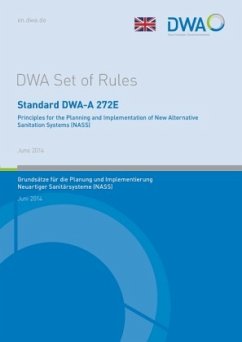In recent years, numerous research and demonstration projects have been carried out at national and international level in the field of new urban water infrastructure systems, leading to new insights and technical concepts. Background of this work are in particular the emerging changes in key framework conditions for water infrastructure, including additional requirements from the point of view of sustainability. Examples of this are the effects of demographic change on the change to grid-connected infrastructures, changes in precipitation regime due to climate change or the demands for improving resource efficiency.These developments were taken up by the DWA and documented in the DWA Topics "New Alternative Sanitation Systems". Based on the experience gained in the meantime, these systems can be used for both as an alternative to conventional wastewater discharge and treatment concepts for new developments and in existing buildings as well as an alternative to conventional remediation measures for existing, over- or underloaded systems.This Standard presents in particular the specific characteristics, which, compared to conventional systems, are to be considered during conception, planning, construction and operation. By a description of the essential aspects and the approach to comparative evaluation of different concepts, including NASS, the effects of the chosen systems on all relevant protection goals and criteria can be considered comprehensively.








